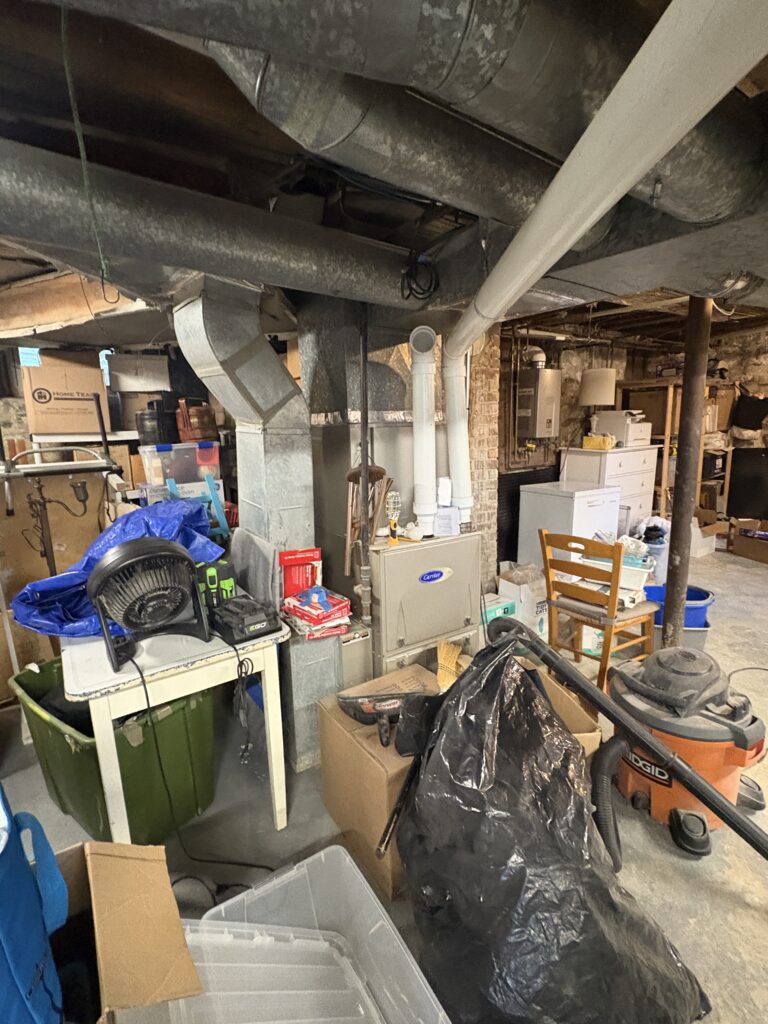How Integrated Controls Work—And Why Mass Save Requires Them for Heat Pump Rebates in Massachusetts
In Winter 2026 if you could unlock up to $8,500 in partial heat pump rebates, shrink your winter utility bills by using a combination of both heat pumps and a gas furnace when most efficient, and keep your home cozy without babysitting the thermostat, wouldn’t you at least want to know how? As Mass Save explains, integrated controls automatically switch between a heat pump and a fossil fuel heating system at a pre-set outdoor temperature, a smart move that the program rewards with sizable incentives.
That simple, automatic switchover is exactly why integrated controls have become the unsung hero of modern HVAC upgrades—and why they now sit at the center of Massachusetts’ most popular heat pump rebates. In the sections that follow, you’ll see what integrated controls are, how they work in real homes, why Mass Save requires them for certain rebate paths, and how they can deliver everyday comfort alongside long-term savings.
Table of Contents
ToggleUnderstanding Integrated Controls: The Basics
Integrated controls are the brains of a hybrid heat pump heating system. They monitor outdoor temperatures, compare them to preset thresholds, and decide whether your high-efficiency heat pump or your legacy boiler or furnace should run at any given moment. You get seamless comfort without toggling thermostats or second-guessing which fuel source is cheaper on a blustery New England night.
A recent energy consulting case study describes integrated controls as a nascent technology that helps homeowners lean on heat pumps when it’s most cost-effective, use their familiar fossil system only as backup, and fine-tune the changeover temperature to keep bills in check.
Here are the key pieces that make the magic happen:
- Outdoor temperature sensor that feeds real-time data to the controller
- Smart thermostat or dedicated control board that houses the switching algorithm
- Communication module linking the heat pump, legacy furnace or boiler, and any zone valves
- Mobile or web app (in many systems) for setting the switchover temperature and viewing performance data
- Safety interlocks to prevent both systems from running at the same time
Think of these components as teammates working toward the same goal: maximum efficiency with zero manual intervention.
How Do Integrated Controls Work?
The process starts when the outdoor sensor registers a temperature above your preset threshold. The controller signals the heat pump to handle all heating because it’s the cheapest, cleanest option at milder temperatures. When the mercury plunges, the controller flips to the fossil system, which can deliver high-temperature air or water without over-taxing the heat pump. According to the U.S. Department of Energy, integrated controllers can better coordinate operation of the mini-split and the central system, and research shows that this coordination preserves comfort while unlocking additional energy savings.
Picture a January evening in Worcester. At 5 p.m. it’s 34 °F, so the heat pump hums along, keeping living spaces warm for pennies on the dollar compared with oil. By midnight the temperature dips to 22 °F. The controller quietly hands the baton to the boiler, preventing the heat pump from straining and ensuring every room stays cozy. When the sun returns and outdoor temperatures rise, the system automatically switches back to the heat pump—no action required from you.
Mass Save requires maximum switchover temperatures of 30 °F for oil or natural-gas systems and 5 °F for propane, rules that are verified during post-installation inspections to guarantee homeowners reap genuine efficiency gains.
Why Mass Save Requires Integrated Controls for Heat Pump Rebates
Mass Save’s incentives aim to do more than help you afford new equipment; they’re designed to lock in energy savings and lower statewide carbon emissions for decades to come. Requiring integrated controls on partial-home heat pump projects is a practical way to hit both targets. By guaranteeing that your system automatically favors the most efficient heat source at any temperature, the program can be confident its rebate dollars translate into real reductions in fossil-fuel use and greenhouse-gas output.
Mass Save’s guidelines spell out exactly how those savings get baked in:
- Integrated controls must be paired with an existing heat pump and a fossil fuel boiler or furnace.
- The controller’s switchover temperature can be no higher than 30 °F for oil or natural-gas backups and 5 °F for propane, limits Mass Save verifies during post-installation inspections.
- The integrated control itself has to appear on the program’s Qualified Product List, and a Heat Pump Installer Network contractor must handle the setup.
- Homeowners can receive up to $1,500 for adding integrated controls to existing systems and the measure is mandatory if you’re seeking a Mass Save partial-home heat pump rebate (but could lead to partial heat pump rebates up to $10,000 in 2025 or $8,500 in 2026).
These rules ensure every dollar of incentive money supports equipment that will actually cut energy use, not just sit idle.
Who Needs Integrated Controls to Qualify?
Mass Save makes the dividing line simple. If you plan to install heat pumps but keep any oil, propane, or natural-gas heating zones, integrated controls aren’t optional—they’re required. Mass Save states that an integrated control from the Mass Save Integrated Control Qualified Product List must be installed for heating zones where propane, oil, or natural gas will remain in use. Customers who are fully displacing heating zones must remove or disconnect the existing propane, oil, or natural gas heating source. This means:
- Partial-home upgrades—where a heat pump shares duties with an existing fossil system—must include integrated controls to unlock rebates.
- Full-home conversions, in which the old boiler or furnace is decommissioned, don’t need integrated controls because there’s no backup system left to manage.
- Homes adding heat pumps to newly finished basements, additions, or outbuildings are generally ineligible for partial-home rebates unless the entire original zone is also electrified, but may be eligible for a new $250 per ton incentive!
Understanding where you fit on that spectrum sets the stage for the comfort and financial advantages you’ll enjoy once integrated controls are in place.
The Real-World Benefits of Integrated Controls
Integrated controls turn a heat-pump project into a living, self-optimizing system. Instead of relying on guesswork, they watch the thermometer and choose the most economical fuel in real time. The result is gentler utility bills, fewer carbon emissions, and steady, even heat throughout every room.
Performance data backs that up. Research from the U.S. Department of Energy found that coordinating a mini-split with a central heating system maintained comfort while still trimming energy use, a sign that smart switching can keep your family warm without waste.
Before you decide whether to add integrated controls to your own upgrade, consider the full picture.
What integrated controls bring to the table:

- Maximize efficiency by always running the lowest-cost heat source
- Lower annual energy bills, especially for oil or propane customers
- Provide smoother room-to-room comfort by avoiding temperature swings
- Enable smartphone or web-based monitoring and control in many setups
- Unlock Mass Save rebates worth up to $8,500 when paired with a qualifying heat pump

- Add hardware and labor costs up front
- Require careful compatibility checks with older boilers or furnaces
- Demand expert setup and commissioning to work as designed
The upsides usually outweigh the hurdles—especially once you factor in the rebate and the day-to-day savings.
Common Questions and Concerns About Integrated Controls
Are integrated controls hard to use?
Not at all. Your contractor (like Endless Energy) programs the switchover temperature during installation. After that, most systems run automatically, and the companion app (if provided) lets you adjust settings with a couple of taps.
Will they work with my existing equipment?
In most cases yes, but compatibility needs to be confirmed during your in-home consultation. Controllers on the Mass Save Qualified Product List cover a wide range of oil, propane, and natural-gas systems, plus both ducted and ductless heat pumps.
What if I upgrade to a full electric system later?
If you eventually remove your fossil system, the integrated control simply becomes unnecessary. Your heat pump will handle all heating duties, and you can disable or remove the controller without affecting the pump’s performance.
Take the Next Step Toward Savings and Comfort
Integrated controls may work quietly behind the scenes, but their impact is anything but subtle. By orchestrating the perfect hand-off between your heat pump and backup system, they help you capture substantial Mass Save rebates, lock in lower heating costs, and enjoy consistent comfort no matter how wild Massachusetts weather gets. In other words, they turn today’s investment in clean technology into long-term rewards for your wallet and the planet.
Ready to make your home smarter and more efficient with a hybrid heat pump system?
Call our team at Endless Energy at 508-625-9102 or self-schedule online to secure your no cost heat pump consultation or your Mass Save home energy assessment and maximize your Mass Save heat pump rebates. Our in-house heating and cooling experts will confirm compatibility, handle the paperwork, and fine-tune your new integrated controls so you can sit back, relax, and enjoy the savings.





